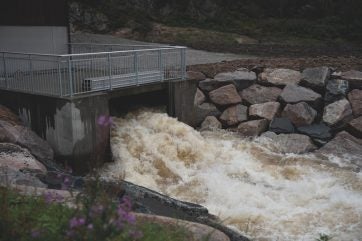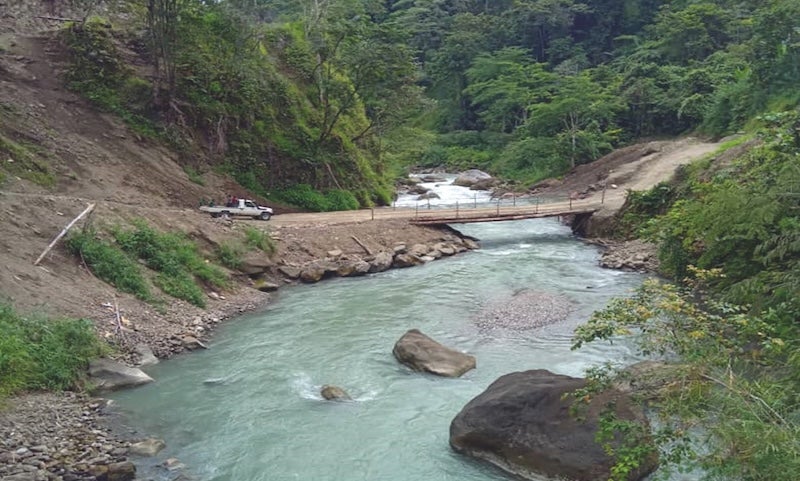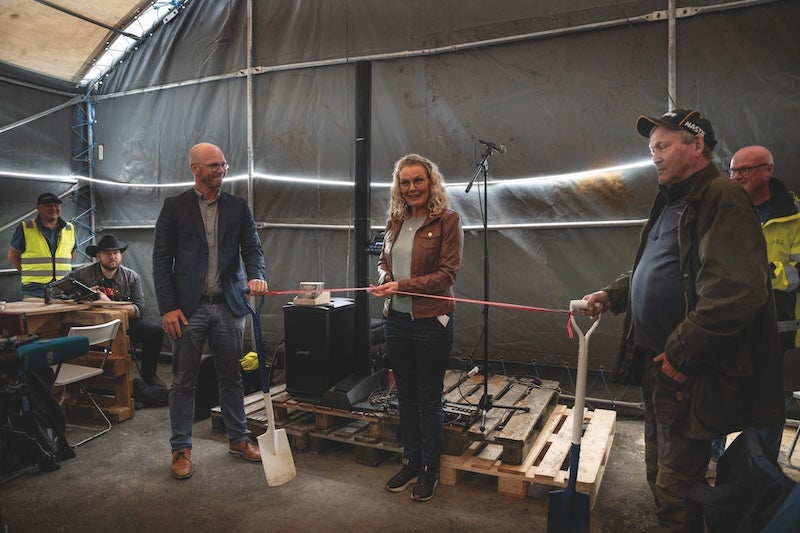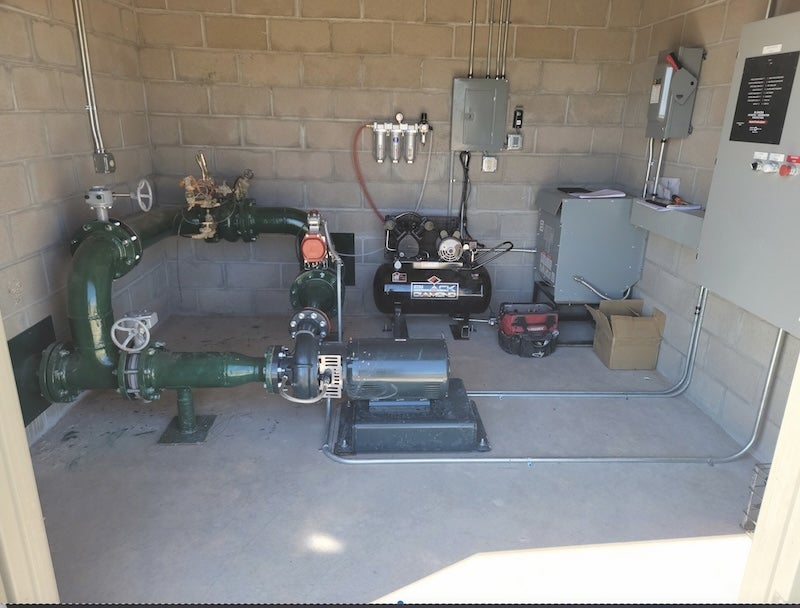
While large-scale hydropower projects often dominate the headlines, small hydro developments are quietly transforming local energy landscapes around the world. In Norway, the Flateland Hydropower Plant is a prime example of how small-scale projects can meet renewable energy goals ahead of schedule. Across the Atlantic, the Ute Mountain Ute Tribe in the US has integrated in-conduit hydropower into its agricultural operations, proving that clean energy can thrive even in desert environments. Meanwhile, projects in Papua New Guinea and South Africa are harnessing the power of rivers to fuel local development and reduce reliance on fossil fuels. These diverse initiatives highlight the growing importance of small hydro in the global push toward a sustainable energy future.
Transforming the energy landscape in Papua New Guinea
SMEC has secured the contract to conduct the feasibility study for the Kuat I Hydropower Project, a development that holds the potential to transform the energy landscape in Morobe Province. This project, once operational, is expected to generate approximately 15 MW of power and produce around 100 GWh of clean, renewable energy annually, providing a reliable power source for the region’s burgeoning industrial and mining sectors.
Finschhafen district, where the project is located, is one of the most hydropower-rich regions in Papua New Guinea. Since 2020, SMEC has been engaged by the Finschhafen District Development Authority (FDDA) to assess the hydropower potential of the district’s rivers. During the prefeasibility study in 2023, SMEC identified four potential hydropower projects within the Kuat River basin. Of these, the Kuat I project was ranked as the most financially viable and accessible, leading to its selection for a feasibility study.
The Kuat I Hydropower Project is poised to play a critical role in the PNG government’s strategy to reduce its reliance on fossil fuels. By developing renewable energy sources like hydropower, the government aims to cut greenhouse gas emissions by 50% by 2030 and achieve carbon neutrality before 2050. The power generated by the project will be integrated into the Ramu Distribution System through a new transmission route connecting the project site to Lae, the nearest city, further supporting regional development.
SMEC’s scope of work includes feasibility-level design and site investigations, which will be conducted by a multidisciplinary team of experts. This team comprises civil hydropower engineers, hydraulic engineers, hydrologists, geologists and specialists in electromechanical and hydromechanical systems.
The hydropower project site’s remote location presents challenges, but SMEC’s deep understanding of the local terrain, coupled with its global hydropower expertise, positions the company to deliver a successful outcome. Drawing on resources from PNG, Malaysia, Australia and the UK, SMEC is dedicated to ensuring the project’s timely and high-quality completion.
Tilak Bhattarai, Regional Lead – Pacific, Dams & Hydropower, commented: “The Kuat I project win highlights our capabilities in design and our ongoing support for renewable energy initiatives in Papua New Guinea. SMEC is currently involved in various stages of project development, including pre-feasibility, feasibility, ESIA and tender designs, for a range of clients across the region.”
This project not only enhances SMEC’s role in Papua New Guinea’s renewable energy sector but also reflects its commitment to engineering positive change through sustainable energy solutions.

Powering South Africa’s renewable future
In the heart of South Africa, along the winding Ash River, a groundbreaking renewable energy project is taking shape. Serengeti Energy’s Boston Hydro project, a 5 MW run-of-river hydropower plant, is making significant strides towards its goal of achieving commercial operation by the third quarter of 2025. This ambitious undertaking is set to become a cornerstone in the country’s renewable energy landscape, marking a pivotal moment in South Africa’s journey towards sustainable power generation.
The Boston Hydro project is not just another energy initiative; it’s the largest of six hydropower plants strategically positioned along the Ash River, which forms an integral part of the water transfer scheme between Lesotho and Gauteng. As construction reaches the halfway mark, the project is on track to become Serengeti Energy’s fourth successful hydropower plant in South Africa.
With an expected annual output of 30 GWh, the Boston Hydro project promises to make a substantial contribution to South Africa’s power grid. This clean, renewable energy source will play a crucial role in reducing the country’s reliance on fossil fuels and helping to meet its ambitious climate goals.
Construction on the Boston Hydro project began in late October 2023, and since then, progress has been steady and impressive. The project team is currently focused on a critical phase: preparing for the water outage of the Lesotho Highland Water Project (LHWP). This planned outage, scheduled from October 1, 2024, to March 31, 2025, presents a rare and valuable opportunity for the construction team to safely carry out essential in-river works.
During this six-month window, the project team will undertake one of the most challenging aspects of the construction: building the diversion weir. This structure, consisting of a mass concrete spillway and earth embankment, is crucial to the hydropower plant’s operation. To ensure completion within the tight timeframe of the LHWP outage, the team has employed innovative construction methodologies. One such innovation is the use of precast elements, which not only enhances the rate of construction but also significantly improves safety for the construction team.
Parallel to the in-river works, significant progress is being made on the powerhouse – the heart of the hydropower plant. This phase of the project presents its own set of challenges, requiring deep excavations into hard rock and the installation of over 150 tons of hydro-electrical equipment. The confined space and the need to manage interfaces between multiple contractors add layers of complexity to this task. However, the project team’s meticulous planning and execution have kept the powerhouse construction on schedule.
The powerhouse is slated to be ready for the installation of a state-of-the-art double-regulated Kaplan turbine by early 2025. This will be followed shortly by the installation of other key equipment, including a synchronous generator and a dry-type transformer. In parallel, preparations for the hydro mechanical gates are progressing well, with installations expected to commence in October 2024.
The project has already made significant strides in securing its future success. Key industry partners, including Etana Energy and Growthpoint Properties, have come on board, securing electricity purchase under a wheeling arrangement. This partnership underscores the project’s importance in South Africa’s sustainable energy development and demonstrates the growing appetite for renewable energy solutions in the corporate sector.
Flateland hydropower plant: A model for small hydro development
The recently inaugurated Flateland Hydropower Plant in Vegusdal, Agder County, is a prime example of the role small-scale hydropower can play in Norway’s renewable energy future. Officially opened on August 29, 2024, by Member of Parliament Gro-Anita Mykjåland (Sp), the plant is expected to generate 47 GWh annually – enough to power all households in the nearby municipality of Birkenes and an additional 500 homes.
At the opening ceremony, Mykjåland emphasized the importance of projects like Flateland to help meet Norway’s renewable energy targets: “We need many more projects like Flateland, and we need them before 2030. Much more renewable energy can be developed in Norway. To achieve this, small-scale hydropower is an important and powerful contribution.”
The Flateland project highlights the collaborative efforts that are crucial for the success of small hydropower projects. Mykjåland pointed to the cooperation between local landowners, subcontractors, and stakeholders as a model for future projects. This broad involvement not only facilitated construction but also secured financing, setting a clear path for others interested in small-scale hydro development.
“Flateland project has been exceptional not only for the outcome but also for the process where all stakeholders and local people have been brought together to make this happen,” said Pekka Saijonmaa, CEO of Suomen Voima Oy, which owns 90% of the plant. Saijonmaa extended his thanks to the contractors and local participants who helped make the project possible.
The plant was built in record time, something Carl-Fredrik Lehland, CEO of Cadre AS (the plant’s operator), attributes to seamless cooperation with local entities. “It requires a lot of knowledge and steady hands to carry out the work done here. The collaboration between us, the landowners, and others has been crucial,” Lehland said. He also noted the role of regulatory authorities like NVE in setting clear requirements and facilitating the development process.
Flateland is one of several small-scale plants making a big impact. It is now the eighth small hydropower facility in Southern and Western Norway owned by Suomen Voima, a Finnish energy company dedicated to expanding its hydropower portfolio in the region. Like many small hydropower projects, Flateland has benefited from local knowledge and close coordination between landowners, developers, and contractors—most notably Tinfos AS, which oversaw the construction.
According to Lehland, this close cooperation allowed the plant to start production three months ahead of schedule. “Thanks to good collaboration with the contractor Tinfos, we were able to start production ahead of schedule. The power plant has been in trial operation since January 2024, and all experiences so far show that everything is working as it should,” he said.

In-Conduit hydropower in agriculture
The Ute Mountain Ute Tribe Farm and Ranch Enterprise (UMUFRE) has made a groundbreaking move by installing an in-conduit hydropower system across its 7,700-acre irrigated farmland. This system, the first of its kind for the tribe, demonstrates how small-scale hydropower can be successfully integrated into agricultural operations, enhancing both energy efficiency and sustainability.
The project consists of five in-conduit hydropower sites integrated into UMUFRE’s center-pivot irrigation system over the past two years. Collectively, these sites generate over 115 kilowatts of clean, renewable energy seasonally. This energy powers onsite farming operations, helping to reduce the community’s reliance on fossil fuels. Rentricity, a New York-based in-conduit hydropower company, played a key role in the project, introducing its Renewable Energy AgriPower™ (REAP™) platform. The REAP™ platform is designed specifically for large farms using gravity-fed irrigation systems, allowing them to recover energy seasonally and significantly cut operational costs.
Key aspects of the project include:
- Scope of Installation: The system covers approximately 1,000 acres dedicated to crops such as alfalfa, corn, and wheat, as well as cattle grazing.
- Energy Generation: The five hydropower sites convert excess pressure from water flowing through irrigation pipes into electrical power without disrupting irrigation.
- Environmental Impact: This project emphasizes UMUFRE’s commitment to sustainable farming, reducing its carbon footprint, and optimizing water-use efficiency in a desert environment. Renovations to 18 center-pivots also contribute to better hydropower resource management.
- Community Benefits: The power generated supports both the farm’s operations and the local electrical grid, improving energy security and supporting the tribe’s economic development.
“We are thrilled to lead the way in integrating Rentricity’s in-conduit hydropower technology into our irrigation systems,” said Simon Martinez, General Manager of the Ute Mountain Ute Tribe Farm and Ranch Enterprise. “These projects not only showcase our commitment to sustainability but also provide a replicable model for other agricultural enterprises looking to adopt clean energy solutions. We are proud to contribute to our community’s energy needs while maintaining our dedication to efficient and innovative farming practices.”
This project marks Rentricity’s first enterprise-wide REAP™ installation, and the company hopes it will serve as a best practice for sustainable agriculture. Frank Zammataro, CEO and Founder of Rentricity, explained the broader potential: “Three months of the 115-kW operation could charge electric vehicles to travel a combined total of approximately 750,000 miles. This is a terrific project demonstrating the importance of harvesting clean energy from solid pipe water infrastructure.”
The initiative has received strong support from the Colorado Department of Agriculture (CDA) and the United States Department of Agriculture’s Natural Resources Conservation Service (NRCS), both of which have been involved since 2016. CDA provided technical assistance, and the project was fully funded by NRCS and CDA under the NRCS Regional Conservation Partnership Program (RCPP).
“CDA has been proud to be an integral partner on this multi-year effort through its ACRE3 irrigation energy–recovery hydropower initiative,” said Sam Anderson, Program Manager for CDA’s ACRE3 energy grants program.
“This is an important project and partnership for the NRCS,” said Clint Evans, State Conservationist for the NRCS in Colorado. “The NRCS supports this pioneering initiative that leverages in-conduit hydropower technology to enhance the sustainability and energy efficiency of agricultural operations. This UMUFRE’s system-wide installation not only exemplifies our commitment to promoting innovative solutions for resource conservation but also sets a new standard for integrating clean energy into agricultural practices. By harnessing the power of gravity-fed irrigation systems, this project will generate substantial clean energy, reduce greenhouse gas emissions, and contribute to the economic and environmental resilience of this tribal farm enterprise. We look forward to seeing the transformative impact this initiative will have on the community and the broader agricultural sector.”







